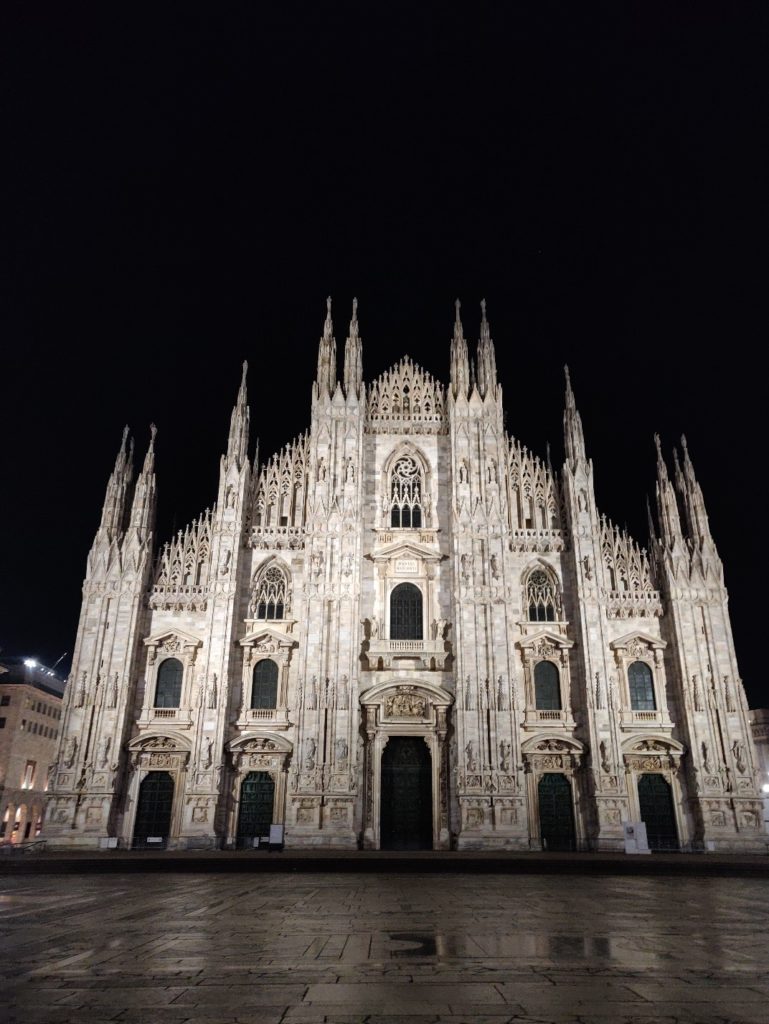Milan: Fashion, Food, and Friends.
Guest Post by: Finance Graduating Senior Cody Martinson. He is a Undergraduate student who participated on a Foster Exchange at Bocconi University in Milan, Italy for Spring Semester 2019.
Milan. You may know it as one of the four fashion capitals of the world, the economic powerhouse of Italy, or maybe you know it as the home of the soccer team AC Milan (and I guess Inter Milan as well), and you’d be correct, it’s all of those, but also so much more. The capital of Lombardy in Northern Italy, just a 40 minute train from Switzerland is a culturally diverse metropolitan city that still manages to maintain a strong Italian identity at its core. From the towering skyscrapers of the business district down to the street stalls selling fresh produce to the beautiful Duomo cathedral in city center, Milan is a city that’s constantly evolving but has never lost touch with what it was. Taking a walk around the city this becomes increasingly clear, just a few doors over from every pizzeria in the downtown area is either an all you can eat sushi restaurant, a kebab shop, or a Chinese take-away, signs of the growth of globalization in the city; while the powerful Castello Sforzesco and the beautiful Galleria Vittorio Emanuele II, symbols of the cultured history of the city, are just a short walk away.

On the topic of the food, one of the most important aspects of the Italian identity, Milan, like most Italian cities, has its own unique flavors that set it apart from the other cities. One such food would be the Milanese pizza. Unlike the “true” pizza from Naples with a thin crispy crust, Milanese pizza is made with the thicker, fluffier, but just as delicious focaccia as the crust, resulting in a completely different pizza experience that’s just as enjoyable depending on what you like. The most Milanese food experience, however, would be their twist on the traditional Italian aperitivo, or happy hour with snacks (literally it means appetizer). What’s traditionally a drink with some light snacks that you have before dinner, transformed in Milan to become a drink with a full-blown all you can eat buffet, usually including the usual snacks along with pasta and a few more main course style dishes such as fish or meat. Especially prominent in the Navigli district, walking down the street at 8 or 9 at night usually meant that you were going to see bars packed with people eating dinner and chatting with their friends while sitting beside the canals. Usually ranging between €8 – €15, this facet of Milanese culture became a quick favorite of us exchange students.

To close this off, I want to talk about the people of Milan since people always say that the people make the city. Like most Italians, they love their soccer, they love their food, and they love their families. They smoke a fair bit, they love their wine and cocktails, and they can be a bit rude at times, but most importantly, they really are friendly people. Sitting on the tram or metro, it wasn’t strange to make small talk with the old lady sitting across from you. Sitting at a small restaurant it wasn’t odd to hold a conversation with the owner or waiters, heck by the time I left Milan, my friends and I were saying a near tearful goodbye to a pizzeria owner we’d gotten to know over the course of our four months there (we ended up getting him ice cream as a farewell). Thinking about the diversity of the city as well, ethnic Italians and a wide range of other Europeans along with a decent east Asian immigrant population and a large African and Middle Eastern group of people living in a odd sense of chaotic harmony really helps to outline how different Milan is from other Italian cities. Milan embraced globalization with its rise as a business hub and it shows in its population.
Milan is a wildly beautiful and diverse city, and I couldn’t recommend spending time in Milan any higher.

